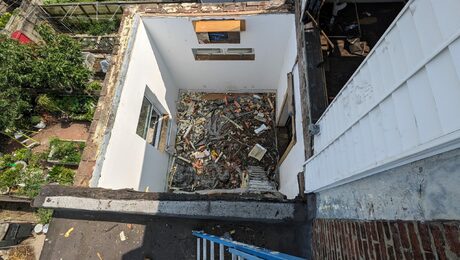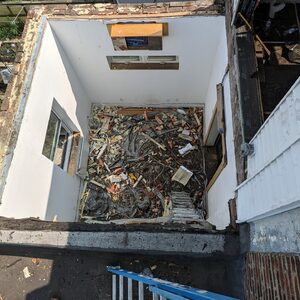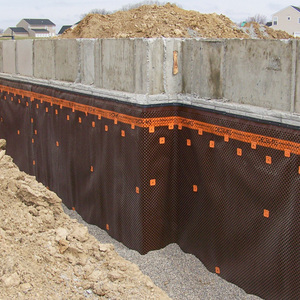We recently built a house and put in a front-loading washing machine on the first floor (the house has a basement). There is floor vibration on the second level above the washer. We mounted the washer on a plywood platform (pretty solidly built) and the floor joists are truss joists with 3/4″ Advantec subfloor and then hardwood on that.
Now, the whole house is built so some retrofits are just not possible (or desirable) but if anyone has any experience with this issue and come up with a solution, please let me know. I’ve been reading on the internet that some people suggest a thick vibration mat under the washer and others said that made it worse, confusing the issue further… so any help would be great.
Doreen



















Replies
I don't think it would hurt to try an anti-vibration mat under the washer, and/or under the box if you can.
But the real problem is why your washer vibrates that much. Has it been properly leveled?
Yeah, a vibration mat or isolation mounts supporting your platform would be worth trying. Otherwise add some mass -- as much concrete as you're comfortable with.
Edited 11/16/2006 4:16 pm by DanH
Have you got it on the pedestal unit that can be purchased with many of the new front loaders? For some reason they help a little.
Other than that and as others have said, it has to be almost perfectly level and an isolation mat of some kind may help. Those things spin at 1000 to 1200 rpm so you are starting off at nearly twice the velocity of a top loader. Just about every review we read before purchasing ours, had some complaint about vibration. The best place to install a front load washer is on a concrete slab.
Dave
Some machines can have the spin speed reduced.
My own front loader is on the same joists and located on an outside wall with 3/4, 1/2, 1 1/2 of gypcrete, and tile. Once in a while it gives a very slight shake but nothing x-fers around the building.
How much do you have in it? I don't think they like to run half empty.
We had an Asko washer/dryer set that we loved dearly. Sold it with the last house. Sniff.
Since you have a basement underneath, and assuming the ceiling is not sheetrocked, I would try this: figure out where the washing machine is, and prop up the joists right under it with a couple of temporary posts. Get 2x4s and cut them to a length where you can wedge them in tightly as "legs" under the machine. If there is already a supporting wall near the machine, try to break the span of the joists approximately in half.
While you're down there, find a stamp on the side of the joists and get all the info from it: manufacturer, series #, width and height, and how long the joists span between supporting walls. We can run that info thru the Boss Hog floor vibration calculator and see how it rates.
Maytag Neptune, Right? Put 200# of ballast in the base.
Vibration isolators work well for vibration but not for a mass spinning and bouncing around. They will actually make the problem worse because they allow a bit of give which compounds the problem - movement.
Instead you need to take MUCH greater care in not only leveling the unit, but confirming that the wieght is distributed to all four legs, solidly. You also need to confirm that the plywood pad is also slolidly set/ attached to the floor.
Often, people will make a paltorm that is strong enough to accept the weight but without strong enough lateral structure. If you think there is more than enough structure - triple it, and maybe you'll get it right.
Another part of the learning curve in getting a new front loader is to figure a) how much of a load is optimum for minimal rocking and b) what combination or not is best for the spin cycle. You'll figure it out in due time.
Oh yeah, one more thing. These units come with blocking/ bracing for shipping purposes. Part of the installation is to remove the braces so the concrete mass under the drum hangs freely. If it is not free the unit will move/ vibrate excessively.
Frankie
Flay your Suffolk bought-this-morning sole with organic hand-cracked pepper and blasted salt.
Thrill each side for four minutes at torchmark haut. Interrogate a lemon.
Embarrass any tough roots from the samphire. Then bamboozle till it's al dente with that certain je ne sais quoi.
Arabella Weir as Minty Marchmont - Posh Nosh
A bit of background info to help you understand the underlying issues: Most wood framed residential floor systems are engineered to support 50 - 70 PSF (pounds per square foot). Manufacturers of at least some of the front loader washers recommend something like 400 PSF of support. A slight discrepancy :-)